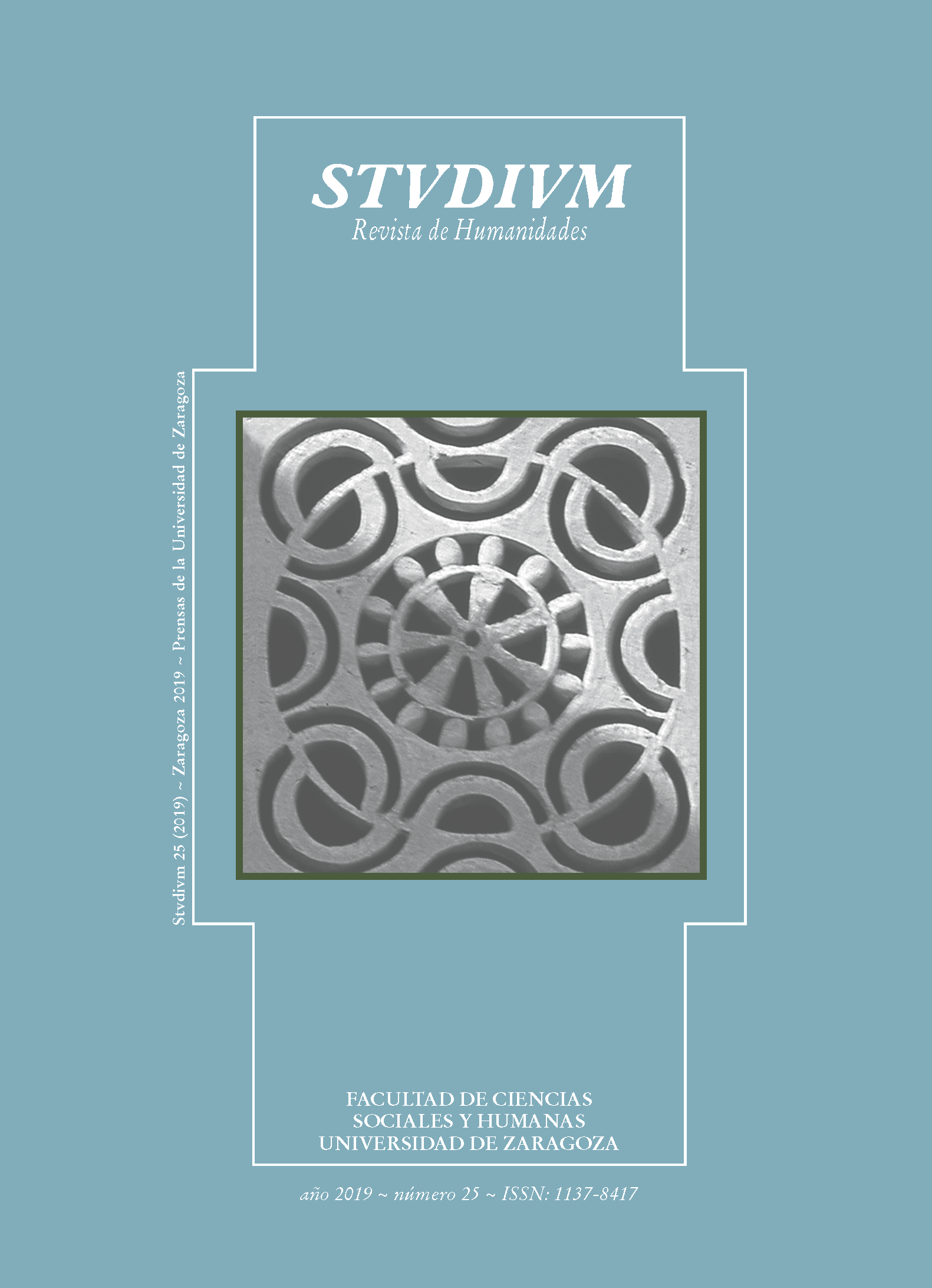Beautiful and Grotesque: Signifiers of Morality and Power in Okpella Masking Traditions (Nigeria)
Bella y grotesca. Significantes de moralidad y poder en las tradiciones de la máscara okpella (Nigeria)
DOI:
https://doi.org/10.26754/ojs_studium/stud.2019254265Palabras clave:
beautiful, grotesque, África, okpella, masquerade, aesthetics, belleza, grotesco, Africa, Mascarada, estéticaResumen
Paired masks described as beautiful and grotesque express complementary values in several southern Nigerian art traditions. Beautiful masks represent humans, often women, and serve as metaphors for things associated with civilization and culture. Grotesque masks represent animals or men, and tend to be linked with notions of masculinity and nature. Analysis of masks falling into these categories provides us with a set of formal criteria for this imagery. Mask types that fall into this continuum are used by the Okpella, a northern Edo people living north of Benin City in southern Nigeria: a female character commemorating specific women of status and described as beautiful (osomhotse), a more ambiguous character that serves as the festival herald and messenger of the Dead Fathers described as grotesque (ulishi), and a third masquerade that combines elements of both the beautiful and grotesque is described as fascinating (efofe). Why and how these forms communicate to their Okpella audience is the focus of this paper. It is based on qualitative research on the history and meaning of these masks carried out among the Okpella (1972-1974), survey research on aesthetic preference (1979) in which 400 individuals were interviewed, and with a panel study (2003) in which 100 participants from the original sample were re-interviewed.
Key words: beautiful, grotesque, Africa, okpella, masquerade, aesthetics.
Resumen
Las máscaras emparejadas descritas como ‘bellas’ y ‘grotescas’ expresan valores complementarios en varias tradiciones artísticas del sur de Nigeria. Las máscaras bellas representan a los humanos, frecuentemente mujeres, y se emplean como metáforas de aspectos asociados con la civilización y la cultura. Las máscaras grotescas representan animales u hombres, y suelen vincularse con nociones de masculinidad y de naturaleza. El análisis de las máscaras que entran en estas dos categorías proporciona un conjunto de criterios formales para comprender este imaginario. El grupo étnico Edo del norte que vive al norte de Ciudad de Benín en el sur de Nigeria, los okpella, usan máscaras de este tipo. Existe un personaje femenino descrito como bello (osomhotse), un personaje más ambiguo descrito como grotesco (ulishi) y un tercero que combina elementos del bello y del grotesco y que se describe como fascinante (efofe). En este artículo nos interesamos en qué y cómo comunican estas formas con los okpella. Nuestro trabajo se apoya sobre una investigación cualitativa realizada entre los okpella (1972-1974), una encuesta sobre preferencia estética (1979) en la cual se entrevistó a 400 personas y un estudio (2003) en el cual se volvió a entrevistar a 100 personas de la muestra anterior.
Palabras clave: belleza, grotesco, África, okpella, mascarada, estética.
Descargas
Descargas
Publicado
Cómo citar
Número
Sección
Licencia
Derechos de autor 2019 Jean M. Borgatti

Esta obra está bajo una licencia internacional Creative Commons Atribución 4.0.
Aquellos autores/as que tengan publicaciones con esta revista, aceptan los términos siguientes:
- Los autores/as conservarán sus derechos de autor y garantizarán a la revista el derecho de primera publicación de su obra, el cuál estará simultáneamente sujeto a la Licencia de reconocimiento de Creative Commons que permite a terceros compartir la obra siempre que se indique su autor y su primera publicación esta revista. (CC-BY)
- Los autores/as podrán adoptar otros acuerdos de licencia no exclusiva de distribución de la versión de la obra publicada (p. ej.: depositarla en un archivo telemático institucional o publicarla en un volumen monográfico) siempre que se indique la publicación inicial en esta revista.
- Se permite y recomienda a los autores/as difundir su obra a través de Internet (p. ej.: en archivos telemáticos institucionales o en su página web) antes y durante el proceso de envío, lo cual puede producir intercambios interesantes y aumentar las citas de la obra publicada. (Véase El efecto del acceso abierto).


